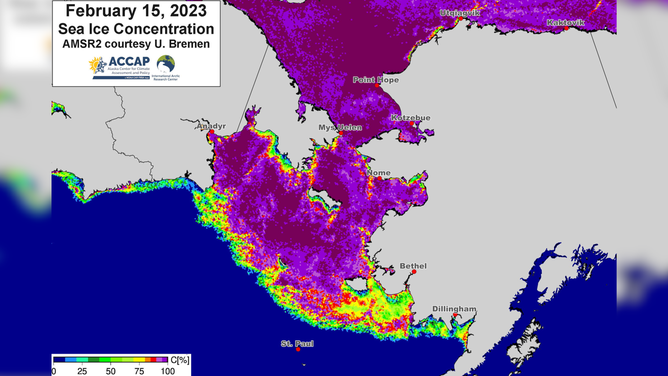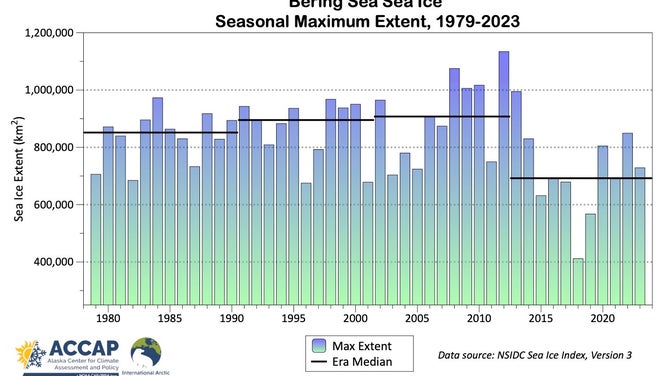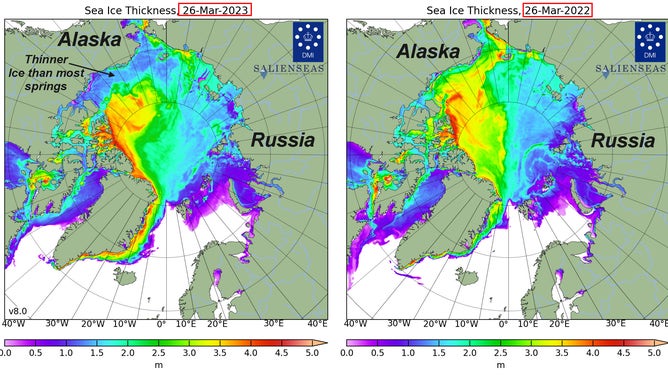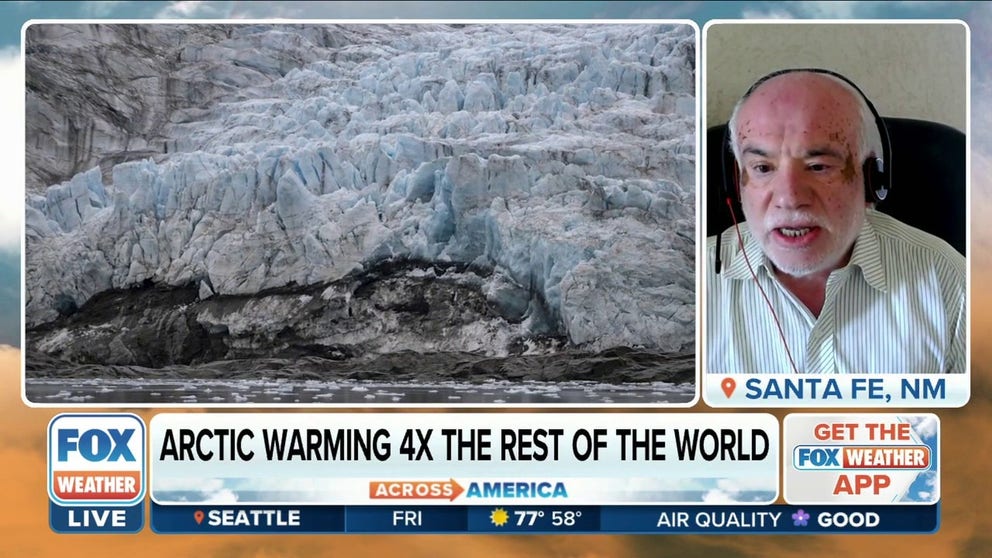Arctic sea ice extent fifth lowest in 45 years of the satellite record
The Arctic sea ice likely reached its maximum extent for the season on March 6, 2023. This decrease in peak sea ice extent can also be seen in the Bering Sea near Alaska, as well.
Arctic warming four times faster than rest of world, study indicates
Los Alamos National Laboratory scientist Manvendra Dubey explains the significance of Arctic amplification on FOX Weather.
This year, arctic sea ice was 7% below its 1981 to 2010 average maximum of 6.04 million square miles at its maximum extent, according to the National Snow and Ice Data Center.
This year's arctic sea ice reached 5.64 million square miles during its peak coverage, which researchers believe occurred on March 6. According to the NSIDC, that figure is the fifth-lowest maximum Arctic sea ice extent in the 45-year satellite record.
This decrease in peak sea ice extent can also be seen in the Bering Sea. Located off of Alaska’s southwestern coast, it reached it peak sea ice extent in mid-February.

Sea ice concentration from on February 15, 2023 between Russia and Alaska.
(International Arctic Research Center at University of Alaska Fairbanks / FOX Weather)
According to the NSIDC, the maximum sea ice extent in the Bering Sea was about 15% below the 1991-2020 median. Alaska Climate Specialist Rick Thoman noted, however, those numbers are in keeping with recent years.
Big drop in arctic sea ice coverage over past 11 years
Thoman added that the median peak ice coverage of the most recent 11-years is more than 20% lower than the three preceding 11-year intervals.

Four black horizontal lines show the media maximum sea ice extent for 11- and 12-year intervals.
(International Arctic Research Center at University of Alaska Fairbanks / FOX Weather)
NOAA CLIMATE REPORT FINDS 2022 WAS EARTH'S 6TH WARMEST ON RECORD
In addition to the extent of sea ice, data shows that the thickness of sea ice has changed, as well.
The figure below compares the thickness of ice between March 26, 2023 and March 26, 2022. Color coding indicates where ice thickness ranges from 0 meters, shown in purple, to 5 meters, shown in a pale red.

Modeled sea ice thickness comparing data from March 26, 2023 to data from March 26, 2022.
(Danish Meteorological Institute / FOX Weather)
According to Thoman, ice is thicker in some areas, such as in Fram Strait along the east coast of Greenland.
In other areas, however, the ice has become thinner. The Chukchi Sea between Russia and Alaska, along with the Beaufort Sea on Alaska’s northern coast, have seen a decline in ice thickness compared to that of last March.
Comparatively-thin ice is also apparent near Alaska and northwest Canada. According to Thoman, this is worrisome for the upcoming summer on multiple fronts, such as ecosystem and community impacts now through at least the fall.
